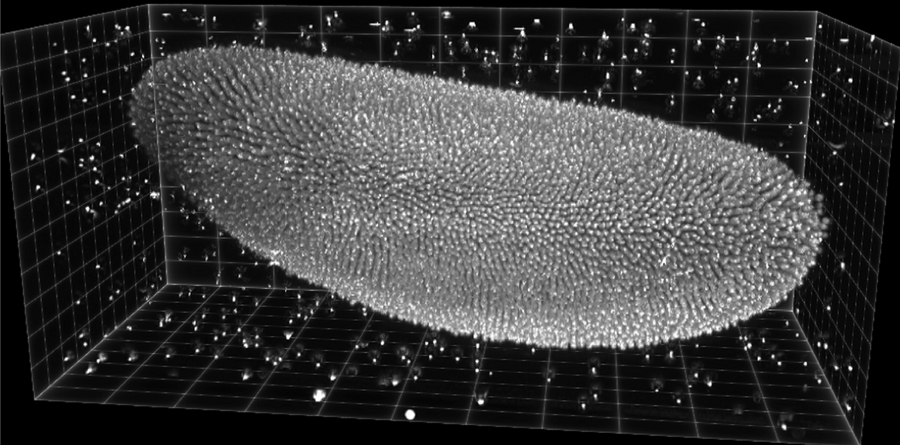
State-of-the art microscopes produce beautiful and sharp images, but the file size of these images can be very large - some microscopes generate 40 TB of data a day. So the rate of image acquisition can easily outpace the speed of processing for image analysis. The research group of Ivo Sbalzarini addressed this bottleneck by developing a distributed parallel algorithm for segmentation of large fluorescence microscopy images.
The input image is broken into smaller sub-images that are distributed across multiple computers using network communication. This allows segmentation of large images of up to 10 billion pixels while acquiring them and will be crucial for smart microscopes of the future. Moreover, this method enables online data compression and interactive experiments.
The method is based on the versatile Discrete Region Competition image segmentation algorithm. The software is open-source and available on GitHub.
Yaser Afshar, Ivo F. Sbalzarini:
A Parallel Distributed-Memory Particle Method Enables Acquisition-Rate Segmentation of Large Fluorescence Microscopy Images
PLOS ONE, 5 April 2016